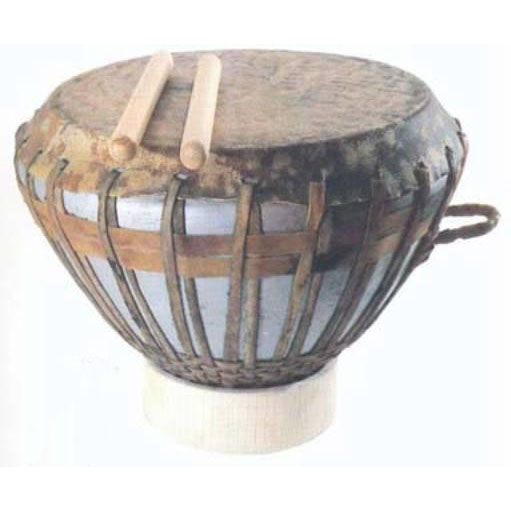How to play Dharma
110 views · Organized by 象牙山首富 on 2022-02-11
When playing, the player holds a chisel in each hand. Damache is placed on the right side of the player, Damachong is placed on the left side of the player, the two drums are connected and fixed together with belts or cloth belts, and one person should play a pair of drums at the same time. Dharma can be played either sitting or playing.
When the Dalai Lama holds a welcoming ceremony on a distant tour, he will play it outdoors, placing a pair of dharmas on both sides of the horse's back. play. Dama's pronunciation is solid and powerful, the volume is loud, the tone is bright, and the transmission effect is good.
The amount used varies from place to place. When performing Tibetan court songs and dances at the Potala Palace in Lhasa and the Tashilhunpo Monastery in Shigatse, four pairs of dharmas should be used at the same time, while in other Tibetan Buddhist monasteries and Tibetan opera troupes, Then use one or two pairs of dama.

When the Dalai Lama holds a welcoming ceremony on a distant tour, he will play it outdoors, placing a pair of dharmas on both sides of the horse's back. play. Dama's pronunciation is solid and powerful, the volume is loud, the tone is bright, and the transmission effect is good.
The amount used varies from place to place. When performing Tibetan court songs and dances at the Potala Palace in Lhasa and the Tashilhunpo Monastery in Shigatse, four pairs of dharmas should be used at the same time, while in other Tibetan Buddhist monasteries and Tibetan opera troupes, Then use one or two pairs of dama.
Involving musical instruments
Dama (pinyin: Dá mǎ), also known as Ga'a, is a Tibetan musical instrument. Popular in Tibet Lhasa, Shigatse, Qamdo, Qinghai Yushu, Sichuan Ganzi, Batang and other places in Tibetan court song and dance bands and Tibetan Buddhist monasteries.
Guess you like
Organized by 陌上花 on 2022-02-11
The drum body is mostly made of brass, and some are made of aluminum alloy or wood. The appearance is similar to a jar with a small mouth and a big belly. The drum bottom is small, the upper part is the largest diameter of the drum body, and the top drum mouth is slightly adducted.
read >>
 渝公网安备 50010702504639号
渝公网安备 50010702504639号